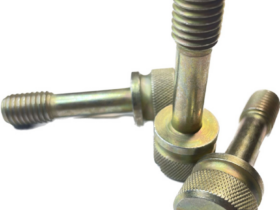Cabbage is one of those vegetables that loves top dressing. Therefore, they feed this plant both at the stage of seedlings, and after planting seedlings in open ground. How and when should be fed cabbage on the beds? And what fertilizers should be used to get dense and large heads?
What fertilizers are required by this vegetable?
Cabbage in the process of growth selects a lot of nutrients from the soil, so it should be planted on fertile types of soil, or fertilizers when preparing the beds, as well as feeding several times per season, this is a vegetable plant.
Cabbage seedlings are usually fed with phosphorus — at this stage it needs such a mineral fertilizer most of all. After planting in open ground, cabbage for active growth requires nitrogen and potassium.
Apply fertilizers containing nitrogen should be on cabbage beds with any type of soil. And if the soil contains a small amount of nutrients, or it is a sandy or sandy loam type of soil, then it is necessary to introduce a slightly more of this fertilizer into it.
Usually, both complex mineral fertilizers and special fertile mixtures intended for vegetable crops are used to feed cabbage. They usually include all the nutrients necessary for vegetable crops. You can also use nitrophos or nitroammophos fertilizer to feed cabbage for feeding.
Also in the fall, when preparing the beds for spring planting of cabbage, organic fertilizers should be applied. Typically, before digging the soil, up to 8 kilograms of humus or completely redundant compost containing manure and peat, per 1 sq. M site. Fertilizers containing macro and microelements (30 — 40 g of phosphates, 10 g of urea and 300 g of ash for the above amounts of kilograms of organics) are also added to humus or compost. These fertilizers are introduced into the soil and instilled to a depth of at least 14 cm. After introducing fertilizers, this area should be abundantly water.
If fertilizers are applied in the spring, then they should be added no later than the first decade of May. When planting seedlings, in each fossa is introduced to half a kilo of a overwhelming compost, 10 g of phosphate and up to 40 g of ash.
Cabbage gives good crops on slightly acidic soils or clinging alkaline types of soil. On podzolic soils, a sufficient amount of wood ash or any type of lime, as well as up to 12 kg of organic fertilizers, is usually brought under a digging in the autumn. During this period, 1/3 of the total seasonal fertilizer norm containing phosphorus and potassium is also introduced.
When the cabbage feeding is carried out
Usually cabbage is still fed at the stage of seedlings three times. But in open ground, fertilizer is usually applied to each hole (if it was not applied in the fall when the site is digging).
If the seedlings of cabbage in open ground grow poorly, then it can be fed with a solution of cow manure or chicken droppings. Manure is diluted with water in a ratio of 1: 6, and the litter is at least 1:12, then this mixture should be infused within a week. And only then, a half -liter jar of such a solution is introduced under each bush of cabbage before watering. After making fertilizer and watering, the cabbage is necessarily huddled.
But the first time you need to feed cabbage not immediately after the seedlings were planted in open ground. The seedlings should take root well, usually it requires at least 2 weeks for this. And only then should be applied to the root of urea — up to 10 g per 1 sq. m. If rainy weather is worth, then urea is simply scattered around the site and loosen the soil, clinging this fertilizer to a small depth. If the weather is sunny, then the nutrient solution is prepared according to the following scheme: 25 g of urea is diluted in a bucket of water. For each cabbage bush, about 2 liters of such a nutrient mixture are introduced. Instead of mineral top dressing, you can make a solution of manure or litter under the bushes of cabbage. The earth around this vegetable crop is usually sprinkled with sifted ash (and at the moment of ripening the heads of heads of ash are powdered and the heads themselves). Such a procedure is preventive — ash scares away many cabbage pests, and also serves as an additional fertilizer for the plant.
The second time they feed this vegetable plant about a month after the cabbage has been fed for the first time. You can use those types of nutrient mixtures that are sold in specialized stores. Perfectly suitable for feeding cabbage vegetable — flower fertilizers, from which solutions are prepared for the root (15 g of the mixture you need 1 bucket of water). You can also use a special complex fertilizer, which is applied to plants according to the attached instructions.
Red cabbage is fertilized in the same way as white, only the number of fertilizers introduced should be doubled.













Оставить коммент.